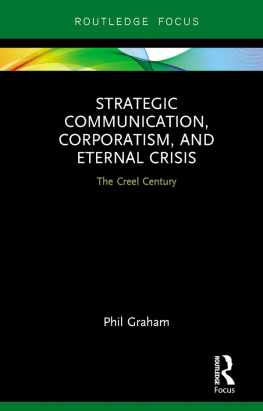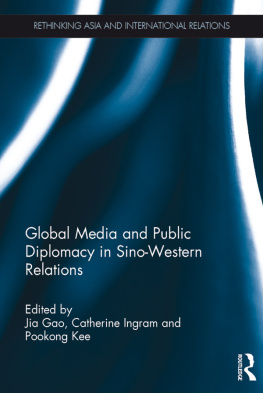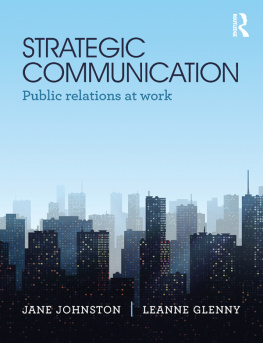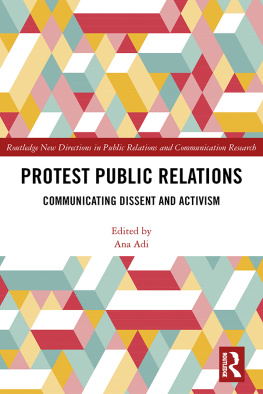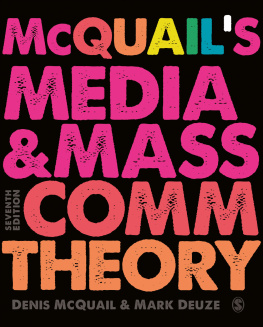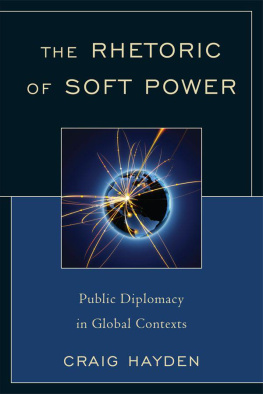Strategic Communication, Corporatism, and Eternal Crisis
This book traces a century of militarised communication that began in the United States in April, 1917, with the institution of the Committee on Public Information (CPI), headed by George Creel and tasked with persuading a divided US public to enter World War I. Creel achieved an historic feat of communication: a nationalising mass mediation event well before any instantaneous mass media technologies were available. The CPIs techniques and strategies have underpinned marketing, public relations, and public diplomacy practices ever since. The book argues that the CPIs influence extends unbroken into the present day, as it provided the communicative and attitudinal bases for a new form of political economy, a form of corporatism, that would come to its fullest flower in the globalisation project of the mid-1990s.
Phil Graham is Professor in the Creative Industries Faculty at Queensland University of Technology, Australia
Routledge Focus on Public Relations
1Transparency, Public Relations and the Mass Media
Combating the Hidden Influences in News Coverage Worldwide
Katerina Tsetsura and Dean Kruckeberg
2Strategic Communication, Corporatism, and Eternal Crisis
The Creel Century
Phil Graham
Strategic Communication, Corporatism, and Eternal Crisis
The Creel Century
Phil Graham

First published 2017
by Routledge
711 Third Avenue, New York, NY 10017
and by Routledge
2 Park Square, Milton Park, Abingdon, Oxon OX14 4RN
Routledge is an imprint of the Taylor & Francis Group, an informa business
2017 Taylor & Francis
The right of Phil Graham to be identified as author of this work has been asserted by him in accordance with sections 77 and 78 of the Copyright, Designs and Patents Act 1988.
All rights reserved. No part of this book may be reprinted or reproduced or utilised in any form or by any electronic, mechanical, or other means, now known or hereafter invented, including photocopying and recording, or in any information storage or retrieval system, without permission in writing from the publishers.
Trademark notice: Product or corporate names may be trademarks or registered trademarks, and are used only for identification and explanation without intent to infringe.
Library of Congress Cataloging-in-Publication Data
A catalog record for this book has been requested
ISBN: 978-1-138-63629-3 (hbk)
ISBN: 978-1-315-20603-5 (ebk)
Typeset in Times New Roman
by Apex CoVantage, LLC
For Gregory A. Hoyle, the last American Progressive
Contents
I have been thinking and writing about most of the themes in this book for at least 17 years. As circumstance would have it, I ended up writing it to coincide with the 100th anniversary of the Creel Committee. It turned out vastly different than I could have imagined. A few things intervened to change the direction of the manuscript. First was the election of Donald Trump to president of the United States. Second was my surprise encounter with Walter Lippmann, whose dazzling intellect left me gobsmacked and wondering how his work had been relegated to obscurity when it was clearly the foundation for a vast majority of contemporary media and communication theory in the United States and elsewhere. The third was a realisation that the pragmatic theory of fact that Peirce, James, Dewey, and their intellectual heirs developed was in fact rhetoric by a different name. Lippmann provided a corrective by upending Peirce, but it came too late to avoid a century of pragmatic scientism. Lippmanns contribution to the theory of pragmatic perception was ignored until Sue Curry Jansen saw what he had done during her 2012 work. I arrived at similar conclusions independently to her, and my slant on his contributions is slightly different. Jonathan Auerbachs Weapons of Democracy also stopped me in my tracks. I think it is probably the best history of the CPI available and is especially insightful in understanding Walter Lippmanns role in shaping progressive America, both before and after the CPI. He has done immeasurably important work in setting the record straight on the role of Ivy Lee and Carl Byoir.
I am grateful to Professor Auerbach for his generous conversation and encouragements during the writing of this piece, and his helpful comments on an earlier draft. I thank and acknowledge Queensland University of Technology who gave me the time to write this. To my old friend and colleague, Allan Luke, with whom I wrote some earlier pieces on some of the themes here, I owe the deepest gratitude for long hours of discussion and endless encouragement. And always to my wife, Dr Naomi Sunderland, whose brilliance keeps me warm, steers me straight, and keeps me sane.
Espiritu Santo, February 6, 2017
This book describes the development of what has come to be called strategic communication, a catch-all term for persuasive communication on the part of military, corporate, and government organisations. The promotional patterns of strategic communication are evident almost everywhere, in the efforts of economists, scientists, and academics of all kinds; to those of journalists, business people, and politicians; to the millions of individuals trying every day to make a name for themselves as social media or blogosphere stars. Those patterns have their roots in one of the most extraordinary efforts of persuasion in human history by what became known as the Creel Committee, the official name of which was the Committee on Public Information (CPI).
The CPI was established on April 14, 1917 by President Woodrow Wilson. Its aim was to garner public support for United States involvement in WWI. That was no small challenge given that Wilson had been re-elected by a slim margin on an anti-war, neutrality platform the previous year. Wilsons slogan was He kept us out of war. The United States was a mere 50 years out of its own Civil War, the war most destructive of human life in history up to WWI. There were no instantaneous mass media. The CPI did its work in a mostly mechanical, print-based media environment which was highly personal and localised. The results it achieved were nothing short of extraordinary. The sheer quantity of activity the CPI organised is remarkable. In 18 months, the committee generated 75 million copies of commissioned booklets; 1,438 drawings for posters and cards, including the famous Uncle Sam I Want You poster by James Montgomery Flagg; more than 40 movies, including Pershings Crusaders, Americas Answer, and Under Four Flags; over 200,000 stereopticon slides; 100,000 copies of its own newspaper every day of the campaign; 755,190 speeches by Creels Four Minute Men; and 700 photographs per day of military activities. The whole campaign cost $4,912,553 to reach a cumulative audience of over 300 million, again, without any instantaneous mass media (Creel, 1920, ).
The CPIs efforts were conducted amidst a throng of newly emerging human sciences, with Scientific Management (Taylor, 1911), Scientific Administration (Wilson, 1887), and Scientific Education (Dewey, 1903) beginning to take their place as technocratic forces. Taken together, they comprised a powerful array of new techniques aimed at shaping peoples actions, attitudes, and opinions in the context of quickly massifying and urbanising societies. They were to be greatly augmented by the CPIs mass marketing of the war effort. And while the term marketing also first appears at the turn of the 20th century (Killebrew and Myrick, 1897), it had to wait for the CPI to make the raw power of its rhetorical potential recognisable once raised to an industrial scale.

